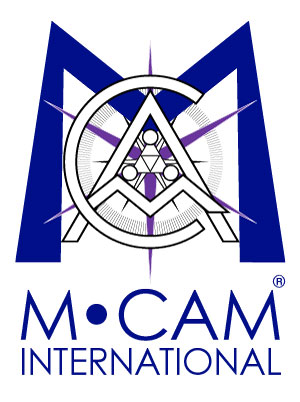The Monopoly Factory (Excerpts)
Date: Wed, 2005-06-01
Respond to this Article June 2005 The Monopoly Factory Want to fix the economy? Start by fixing the Patent Office. By Zachary Roth [Excerpts] … “Some might even use the word ‘crisis'” The 1991 decision to make the PTO pay for itself, however, has created a series of perverse incentives that encourage the office to approve undeserving applications, and has made it easier for applicants to game the system. Because each new application now brings in a $380 fee, the agency has an incentive to approve those patents sending a signal to the market to apply for more. Additionally, patent-holders pay annual maintenance fees for the first 12 years of a patent’s life, meaning that each approved patent brings in a total of over $3,000 to the office. So every patent issued means a bigger budget for the patent office, and helps to guarantee that Congress will continue to look kindly on the office . “It’s like telling the Treasury Department, go call the Bureau of Engraving and Printing and tell them that they’re gonna get paid by how many twenties they print,” says David Martin, who runs M-CAM, an intellectual-property consulting firm based in Charlottesville, Va., and has testified frequently before Congress about the patent system. Dan Ravicher, of the Public Patent Foundation, a non-profit legal organization, agrees. “At the agency level, if you want to increase the number of people applying for a patent you don’t want a reputation for being tough on applications,” he says. You want a reputation for being a rubberstamp. And that’s pretty much what the patent office is now.” The agency denies that management encourages examiners to approve applications. But one examiner told The Washington Monthly that he had been told by a manager, “We’re not the rejection office … if you can’t figure out what’s going on, don’t reject it.” Another examiner agrees: “That’s where the push is coming [towards allowing more applications], because allowances bring maintenance fees.” The patent office, operating under these institutional incentives to push more patents out the door, has set up a system that encourages individual examiners to green-light more of the applications that cross their desks. The first of these individual incentives stems from the fact that the examiners are overworked. Even with increased number of examiners, and their relocation to a more comfortable environment, the patent office hasn’t been able to come close to keeping pace with the mushrooming number of patent applications. In 1983, the office received 87 applications per examiner. That figure has since risen steadily, and in recent years has generally been over 100. That increase would be manageable for the office were it not for the fact that, over the same period, applications have become vastly longer and more technically complex, as software and information technology have come to account for an ever-larger proportion. “Whereas in the old days it was extremely rare that you got a case of 100 pages, it’s now pretty common. Cases have just gotten bigger,” says Ron Stern, a veteran examiner and the head of the patent examiner’s union. As then-commissioner James Rogan noted in testimony before a House subcommittee in 2002, “The increasing volume and complexity of our workload poses serious issues for the patent office. Some might even use the word ‘crisis.'” While the weight of the workload gives examiners a passive incentive to rubber-stamp patents, the office’s worker evaluation system gives them an active one. The size of an examiner’s bonus is determined in part by the number of “counts” he amasses. Examiners gain one or more counts each time they open and close a new case. But when examiners reject patent requests, applicants typically adjust the claim and file a “continuation,” denying the examiner a count. So, an examiner concerned about his bonus has a strong incentive to approve the application. “There’s a gaming of the system,” says Harold Wegner, a former examiner who now works as a patent attorney with the law firm Foley and Lardner. “You can get a stack of applications and just allow patents and get your [counts] that way.” … A second set of eyes The result is a system that has approved ever-higher percentages of applications. According to a 2002 study of patent office data by attorneys Cecil Quillen, and Ogden Webster, and Richard Eichmann of Cornerstone Research, the success rate for patent applications rose from 69 percent in 1984 to 86 percent in 2000. In other words, the patent office now grants applications to more than eight out of 10 applicants. The patent office argues that it is simply carrying out the will of Congress. Brigid Quinn, an agency spokeswoman, says that examiners are required by law to grant applications, unless they can find evidence to reject them. “So the office is doing exactly what the law requires that they do,” she says. But in fact, as David Martin, an intellectual property consultant, points out, the law as written only says that an applicant “may obtain” a patent if sufficient evidence can’t be found to reject it. It doesn’t require that the office grant a patent. When the patent office created its Manual of Patent Examining Procedure (MPEP), an internal document used to establish uniform standards of examination, it wrote, “shall obtain,” rather than “may obtain.” That change has allowed the office to act in its own self-interest by treating applicants as favorably as possible, while simultaneously claiming that its hands are tied by the law. “That subtle substitution of ‘shall’ for ‘may’ is one of the key reasons why we have the problems we have right now,’ says Martin. The patent office denies that the quality of its patents has declined. And, in fact, there are no comprehensive measures of patent quality. But an internal agency experiment gives an instructive glimpse. In 2001, the office created a new set of rules for reviewing “business method” patents-a relatively new category of patentable material, covering non-technical innovations, such as Amazon.com’s “one-click” ordering system (the patent protects the idea, not the technology necessary to carry it out). The complexities of these patents were causing problems for many examiners, so the office instituted a “second-set-of-eyes” system, which simply required an additional examiner to review each application. Under the new system, the allowance rate for business method patents was quickly halved. That suggests patents in other complex fields, such as bio-technology, given without a “second set of eyes,” may have similarly higher error rates. The countless faulty patents that are pumped out through this process can be extremely damaging to the American economy. They force consumers to pay more than they otherwise should. They make the patent office an easy mark for those who would manipulate the system-and indeed have given rise to a whole new category of scammers: “patent trolls.” Some economists think that all the extra patents in corporate portfolios have artificially enhanced the value of those stocks, creating what they call a “patent bubble,” with potentially devastating results for many investors. Worst of all for the economy and for society as a whole, a faulty patent system can create substantial obstacles to basic, critical scientific and technical innovation. …


Sorry, the comment form is closed at this time.